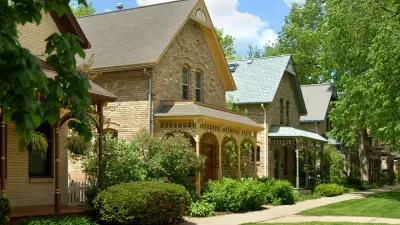The demographic milestone shows how the U.S. is quickly becoming a nation of minorities - and also shows the rapid aging and lower birth rates of the white, non-hispanic demographic. However, due to immigration, the total white population increased.
Greg Toppo and Paul Overberg report on the new U.S. Census Bureau estimates for 2012 released June 13. The development had been expected to occur at the end of the decade.
Between July 2011 and July 2012, an estimated 12,400 more white Americans died than were born, says demographer Kenneth Johnson of the University of New Hampshire's Carsey Institute. As recently as 2010-11, white births outpaced deaths by 29,600.
While barely growing, whites make up 64% of the population and won't become a minority until 2050 if current trends continue, write Toppo and Overberg.
William Frey, a demographer at the Brookings Institution explains the connection of the shrinking non-Hispanic white population to the economy and funding of some of America's social welfare programs.
He predicts that white retirees "will be on the receiving end of an economy which will be fueled largely by the efforts of Hispanics, blacks and Asians," whose birth-to-death ratios are not headed in the same direction.
Frey states that "one of our challenges this century (will be) having a large part of the old Baby Boom understand it's the young people who are really their benefactors."
The Census also reported on the rate of growth of the country's racial and ethnic groups.
- Asian population rose 2.9% last year, much of it because of immigration, to 18.9 million
- Hispanics grew 2.2% to just over 53 million
- African Americans grew by 1.3% to 44.5 million
- Native Hawaiians and Other Pacific Islanders climbed 2.2 percent to about 1.4 million
- American Indians and Alaska Natives rose 1.5 percent to a little over 6.3 million
- Whites grew by 0.1%
The current U.S and world population can be seen on the Census Population Clock.
FULL STORY: Census: More deaths than births among whites

Maui's Vacation Rental Debate Turns Ugly
Verbal attacks, misinformation campaigns and fistfights plague a high-stakes debate to convert thousands of vacation rentals into long-term housing.

Planetizen Federal Action Tracker
A weekly monitor of how Trump’s orders and actions are impacting planners and planning in America.

San Francisco Suspends Traffic Calming Amidst Record Deaths
Citing “a challenging fiscal landscape,” the city will cease the program on the heels of 42 traffic deaths, including 24 pedestrians.

Defunct Pittsburgh Power Plant to Become Residential Tower
A decommissioned steam heat plant will be redeveloped into almost 100 affordable housing units.

Trump Prompts Restructuring of Transportation Research Board in “Unprecedented Overreach”
The TRB has eliminated more than half of its committees including those focused on climate, equity, and cities.

Amtrak Rolls Out New Orleans to Alabama “Mardi Gras” Train
The new service will operate morning and evening departures between Mobile and New Orleans.
Urban Design for Planners 1: Software Tools
This six-course series explores essential urban design concepts using open source software and equips planners with the tools they need to participate fully in the urban design process.
Planning for Universal Design
Learn the tools for implementing Universal Design in planning regulations.
Heyer Gruel & Associates PA
JM Goldson LLC
Custer County Colorado
City of Camden Redevelopment Agency
City of Astoria
Transportation Research & Education Center (TREC) at Portland State University
Jefferson Parish Government
Camden Redevelopment Agency
City of Claremont



























